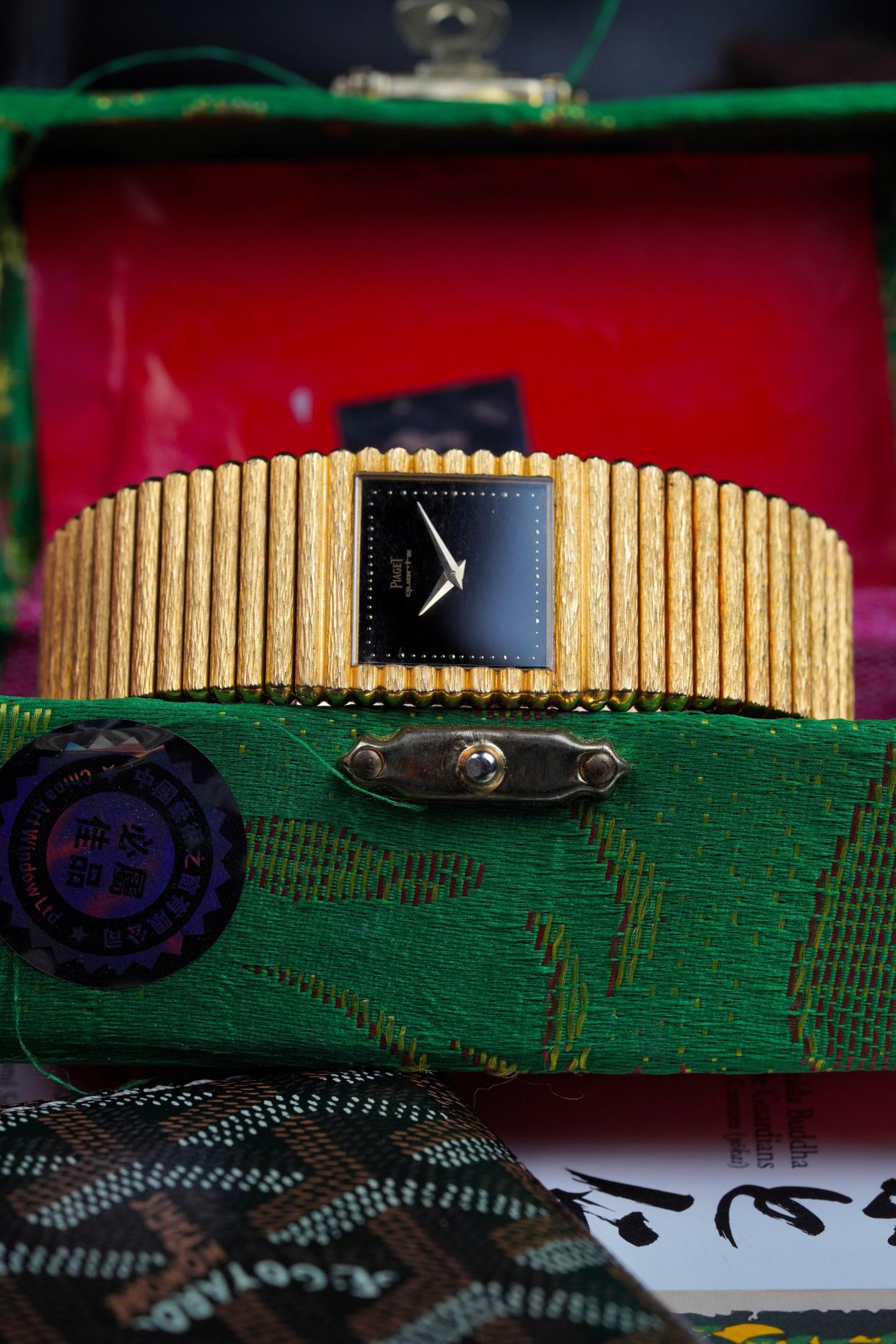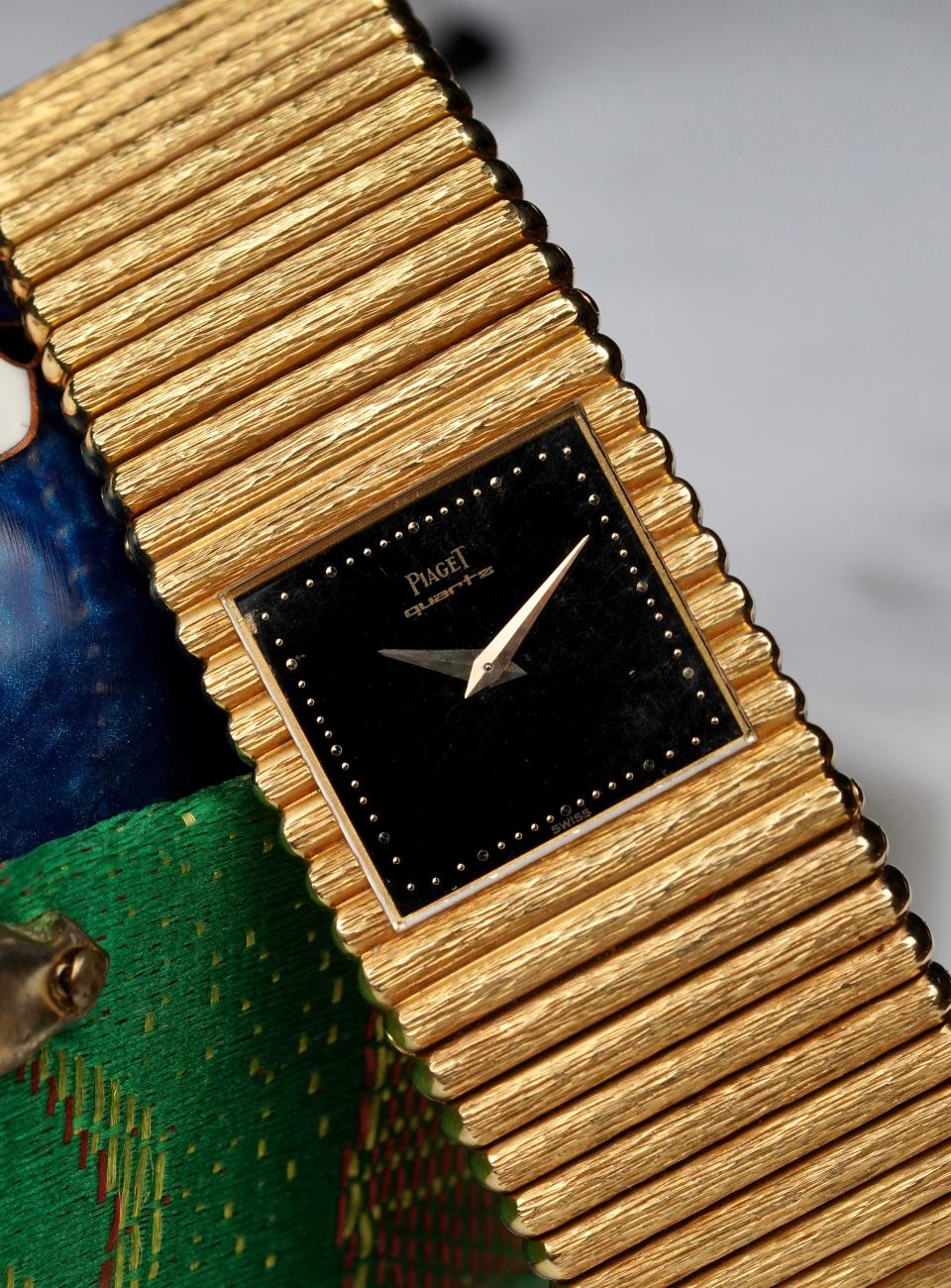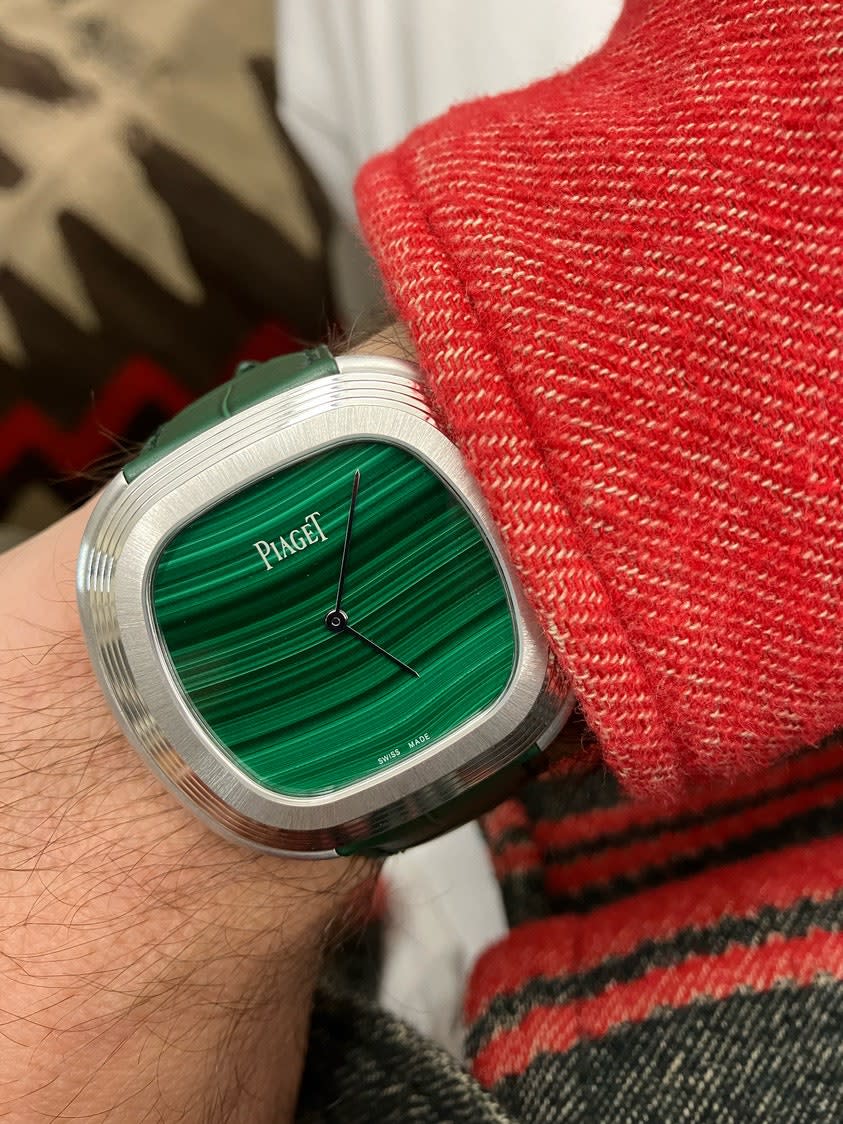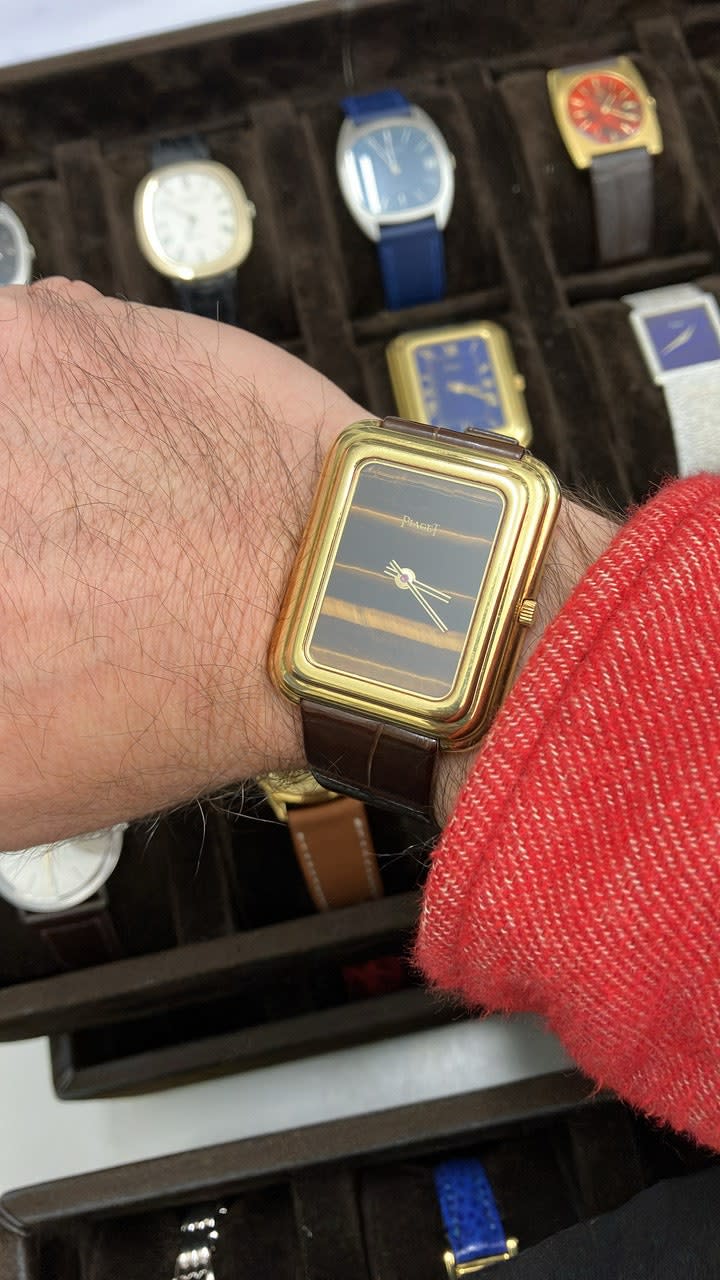The Best Watches From Scorching-Hot Piaget, According to the Watch Illuminati

This is an edition of the newsletter Box + Papers, Cam Wolf’s weekly deep dive into the world of watches. Sign up here.
Piaget is inarguably the hottest brand in the watch world right now. The fire around the jeweler could burn down a forest or, better yet, cook a crackly charred-crust pizza in no time. This was mostly true even before the brand unveiled its re-edition of the beloved Polo, which was originally released in 1979 and set the tone for the Scrooge McDuck tastes of the ’80s. The Polo was such a big deal for Piaget that it was the maker’s first watch ever to get a name—every previous timepiece simply got a reference number, and that was that. (The Umbrella Academy of brands!) This year marks Piaget’s 150th anniversary, and the new Polo 79 is surely only the first of many releases tied to that celebration. Piaget has a deep archive of watches beyond the Polo that could warrant a re-release.
With that in mind, I gathered up some of Piaget’s more passionate collectors and a couple of dealers who hawk the brand’s vintage rarities to speculate about what else the maker might release this year. Below, members of the Watch Illuminati dish on their favorite non-Polo Piaget models.
Dylan Lewis, founder of Goldfinger’s Vintage

“What I love about Piaget is the mystery and variety in each creation. This is especially true of vintage models from the brand. Every example that comes up for sale in the current market is never identical to the last. Unless you’re talking about a distinct model family like the Polo, if you see something and it sells, odds are you’ll have a hell of a time finding that exact variant again. There is so much variety in vintage, you’ll rarely see the same example twice.
“Piaget created many distinctive pieces to spec for customers from the 1960s to the 1980s. These pieces featured dials made of exotic materials from stones like lapis lazuli, malachite, tiger’s eye, and more. This allowed the brand to provide its customers with endless combinations to choose from. These dials then ended up inside watches with various case shapes, bracelet finishes, calibers, types of gold and bracelet lengths, all at the clients’ request. Piaget creations from this era are as close to getting a pièce unique as possible.
“Vintage Emperadors are some of my favorites. It’s a bracelet-style watch like the square Polo—where the case and bracelet are one and the same—but the sheer weight is insane. Over 200 grams of gold, with textured bark finish throughout.
I think over the last 50 years Piaget has become the master of textured gold. Its finishes almost resemble cloth or silk. Nothing plays with the light better, becoming more garment than metal.”
Kevin O’Dell, @Theydid

“The rectangular precious metal models are a great value proposition at the moment, particularly the ones with the 9P movement, given the quality and the price point compared to Cartier,” O’Dell said. This reference 9741 O’Dell found above comes in 18-karat white gold.
Thorsten Jülich, @Piagetcollector

“Introduced in 1963, the Protocole watches share a unifying feature: a refined rectangular case adorned with cut corners and vertical engine turning on both the case and dial. Initially propelled by the hand-wound 2mm thin caliber 9P, these timepieces have evolved over the decades. The Protocole line has grown to encompass a diverse range, featuring XL editions, round variations, and exquisite ‘Miss Protocole’ ladies' watches.
“The best-known Protocole reference is the 9154 which comes in a wide range of styles, including models with simple straps, luxurious full-set diamond models, and options with various stone dials. It comes in a 25 x 27.5 mm case and the earliest reference I have seen dates back to the early ’70s.
“My preferred Protocole model is the 90154, relaunched by Piaget in the ’90s. The brand increased the size slightly compared to the 9154, featuring a 26 x 30.5 mm case with a distinctive curved shape. This design imparts a remarkable presence to the watch when worn on the wrist. The 90154 appears to be much rarer than the 9154 in the market, as, in my entire time as a collector, I've only come across a few of them.”
Marla Hamed, @wrist_wanderer
“Piaget’s 1970 reference 14101, also known as the Beta 21, is the ultimate Piaget for me.
“I love that its unusually bold, chunky design embodies the experimental spirit of the decade and also houses a movement that was so pivotal in watch history. The movement was so large it shaped the design of the watch, forcing Piaget to create a chunky case to house it, a design they likely wouldn’t have made otherwise. It has a brilliant, meticulously engineered triple-step case lending the watch a slimmer and more elegant look.
“Piaget experimented with striking stone dials on this model, using Tiger’s Eye or Lapis Lazuli on a select few. The stones’ playful color livens the spirit of the chunky watch. I adore it because it encapsulates so much watch history, cultural significance, engineering, and style!”
Gai Gohari, @morillo55


“I love the stepped cushion cases from Piaget, whether modern or vintage. That TV-shaped case design, either vertical or horizontal, has been my favorite since my gemstone-dealing days. In my personal collection, I have [the above] Beta 21 with a tiger’s eye dial and stepped vertical cushion as well as the modern Andy Warhol malachite dial.”
Mr. Knospe, Plus Ultra AG

“There are so many outstanding models in the vintage Piaget portfolio. Opulent cuff watches or the ladies classics wrapped around the small caliber 9P: small, thin, and feminine. But there is one watch that stands for Piaget and its beginning dominance in the ‘70s and ‘80s like no other: the Beta 21 reference 14101, the first Swiss quartz watch, presented to the public in April 1970.
“It is not only the smallest watchcase for the rectangular Beta 21 movement—remember: all participants (Rolex, Patek, Omega, IWC, and Piaget to name the biggest) used the same movement that was developed in a joint venture. But only Piaget basically wrapped its solid gold case around the movement and made it appear even smaller by clever finishing and angles. Compare it to a Patek ref. 3587, a Rolex ref. 5100, or an Omega Pupitre. The Piaget Beta 21 is also the thinnest of its peer group: by simply getting rid of the second hand, Piaget saved some millimeters, all working to make a giant movement look like a typical watch for the times.
“The concept of the rectangular case inspired the likes of Patek for its Beta 22 (ref. 3603) from 1973 followed by Omega for its Beta 22, which also came without a second hand in 1973.
“But there was more that made the Piaget stand out: it was the only Beta 21 with a stone-dial, as the competitors simply were not able to replicate those at the time. What else, you ask? Well, besides the movement, all components were made in-house at Piaget while others received theirs from third-party suppliers. Piaget had a unique and superior way of watch manufacturing that was copied by its competitors in the following decades.
“Plus, Piaget made it in higher quality than most competitors, demonstrating its commitment to quartz as an important technology in horology: while Patek used two small aluminum pins to "fix" the movement in its oversized case and Omega used plastic bars, Piaget was the only brand putting the important movement into a heavy solid gold cage with all components fitting to the micrometer.
“With this watch, Piaget mastered the task and served as a model for others. In some aspects, they even beat the top dogs of horology. The reference 14101 tells all this in just one watch.”
See all of our newsletters, including Box + Papers, here.
Originally Appeared on GQ

